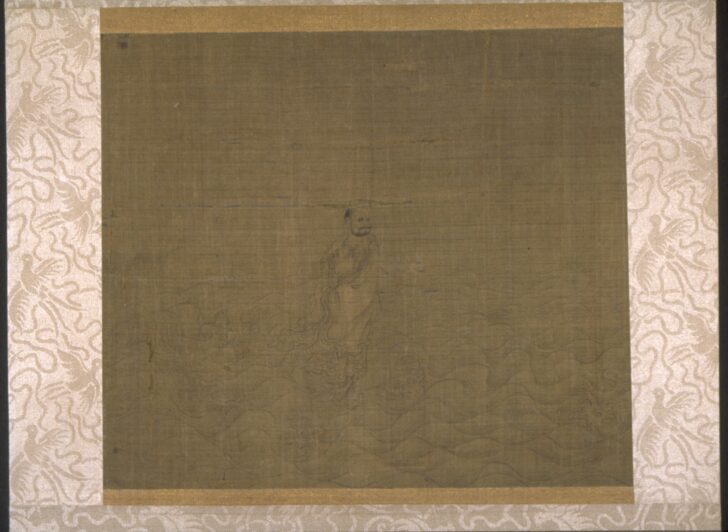Bodhidharma Crossing the Yangzi River on a Reed
Chinese

Description
According to traditional accounts, Bodhidharma was an Indian prince and meditation master who arrived in China in the late fifth century. With the passing of centuries, he came to be regarded as the founder of the Chan (Zen) tradition. Untold numbers of Zen monks in both China and Japan painted his image over and over again, in an act that was both homage to a great forebear and a form of meditative practice.
The earliest records of his life mention only three events. The first was an unsuccessful attempt to convert Liang Wudi, the Buddhist king of a large state in southern China, to Zen. Not surprisingly, this scene rarely appears in Zen art. The second was his crossing of the Yangzi River, and although the texts do not specify how he did so, in paintings the crossing is always shown as a miraculous event, with the patriarch standing upon a single reed. The final event was a nine-year meditation, seated facing the wall of a cave.
This Ming dynasty rendering of the crossing of the Yangzi may have been done by a professional artist for a wealthy lay patron. Bodhidharma looks back over his shoulder somewhat anxiously, while the winds whip up whitecaps on the river. His robe flutters in rippled patterns that echo the foam in the water, making him seem as ephemeral as the waves. The painting has darkened with age (the silk would have originally been a creamy ivory color), but the supple and assured brushwork is still impressive.
Arts of Zen, February 15-June 15, 2003
M. Graybill, Senior Curator of Asian Art
Usage Rights:
If you are interested in using an image for a publication, please visit https://umma.umich.edu/request-image/ for more information and to fill out the online Image Rights and Reproductions Request Form.